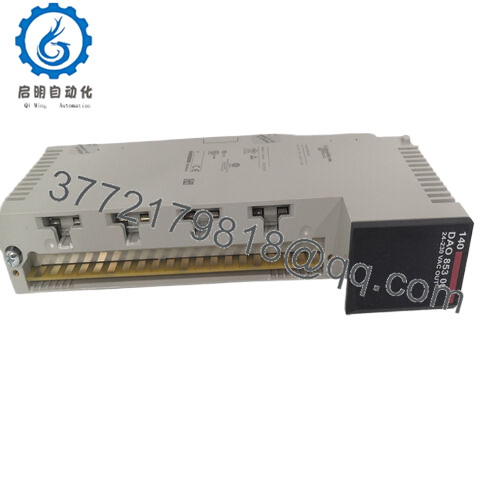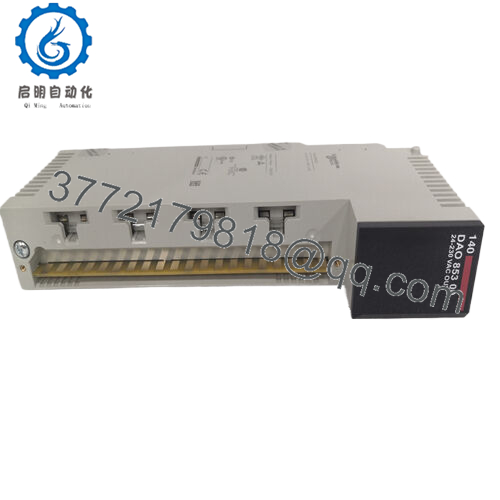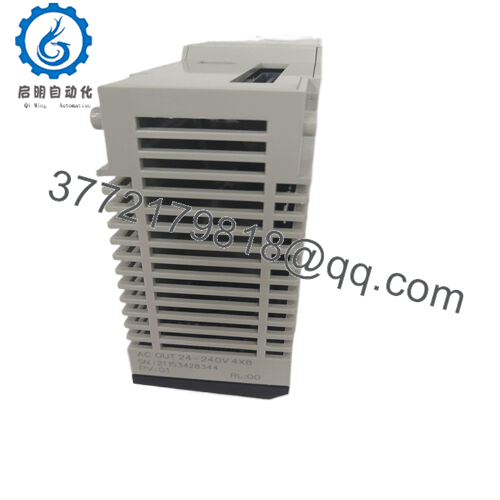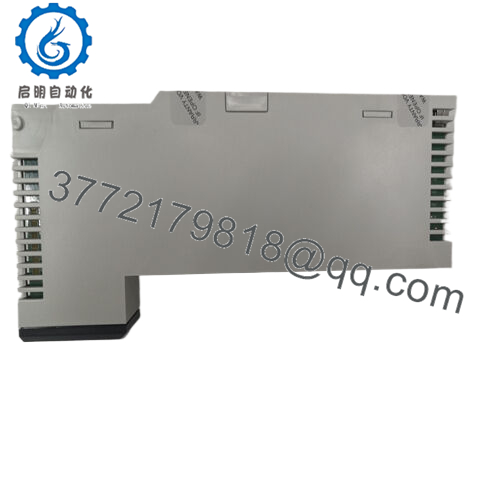Description
Where is this product used and why?
The Schneider 140DAO85300 finds extensive use in industrial automation systems where reliable control of AC discrete outputs is essential. Commonly deployed in manufacturing plants, assembly lines, energy management systems, and process control environments, this discrete output module enables precise on/off control of various field devices such as motors, solenoids, and indicator lamps. Its ability to handle voltage signals ranging from 20 to 253 V AC makes it suitable for diverse industrial applications requiring robust switching capabilities. This module addresses the challenge of maintaining system uptime and flexibility by supporting hot-swappable installation, allowing maintenance or replacement without shutting down the control system. Its design supports applications that demand high channel density and efficient rack space utilization, offering 32 output channels grouped into four sets of eight, which optimizes wiring and system organization. The Schneider 140DAO85300 is a trusted component for engineers integrating Modicon Quantum series programmable logic controllers (PLCs), providing dependable discrete output control with diagnostic features to reduce downtime and simplify troubleshooting.
Product introduction & positioning
The Schneider 140DAO85300 is a 32-channel discrete output module designed as part of the Modicon Quantum automation platform. As a dedicated output device, it manages AC loads in complex control systems by switching discrete signals on and off based on PLC commands. The module plugs into a Modicon Quantum backplane, communicating via a high-speed backplane bus for secure and efficient data exchange with the associated controller. Positioned as a key I/O component, the 140DAO85300 fits within the modular architecture that allows system scalability and flexibility, accommodating expanding automation needs. Its configuration versatility—each channel configurable as relay or solid-state output—enables compatibility with various load types, making it highly adaptable for engineering and integrator teams designing control architectures in manufacturing, process industries, and critical infrastructure. The module’s design aligns with Schneider Electric’s commitment to industrial reliability and ease of maintenance, distinguishing it as an essential element in ensuring continuous operation within demanding automation systems.
Key technical features & functional benefits
The Schneider 140DAO85300 excels with its 32 discrete output channels divided into four groups of eight, a layout intended to streamline wiring and system diagnostics. Each output supports an electrical range of 20 to 253 V AC and can handle surge currents up to 2.5 A, making it capable of controlling a wide variety of industrial actuators and devices. The module’s response time is quick, with on/off switching occurring in less than 0.5 milliseconds, supporting fast control cycles. Outfitted with internal RC filters and 4 A fuses per output, it provides robust protection against electrical noise and overload conditions, which significantly extends operational lifetime and reliability.
- 140DAO85300
The hardware design emphasizes industrial durability, with components rated to operate within ambient temperatures from 0 to 60 degrees Celsius and relative humidity up to 95% without condensation. The module is built to meet stringent certifications including FM Class 1 Division 2, UL 508, and CSA standards, underscoring its suitability for hazardous and demanding industrial environments.
Integration is straightforward, as the module communicates via the Modicon Quantum backplane bus, ensuring seamless interoperability with Quantum PLCs and related system modules. Its hot-swappable design reduces downtime by allowing repairs or upgrades without shutting down the entire rack. Additionally, diagnostic LEDs for each channel and fault indicators on the module assist engineers with quick identification of operational status and troubleshooting needs.
Detailed technical specifications
| Parameter | Value |
|---|---|
| Model | 140DAO85300 |
| Brand | Schneider Electric |
| Product Type | Discrete Output Module |
| Output Channels | 32 (4 groups of 8) |
| Discrete Output Voltage | 20–253 V AC |
| Supply Frequency | 47–63 Hz |
| Max Load Current | 16 A RMS per module, 4 A RMS per group |
| Surge Current | ≤ 2.5 A for 1 ms |
| Response Time | ≤ 0.5 ms (on/off switching) |
| Protection Type | Internal RC filter, 4 A fuse per output |
| Operating Temperature | 0 to 60 °C (32 to 140 °F) |
| Humidity Tolerance | 95% relative humidity, non-condensing |
| Weight | 0.45 kg (0.99 lb) |
| Certifications | FM Class 1 Division 2, UL 508, CSA C22.2 No.142 |
| Environmental Rating | Industrial grade, IEC electromagnetic immunity standards |
Related modules or compatible units
140DOR85300 – Companion discrete output module offering relay outputs for DC and AC loads.
140AIH00100 – Analog input module compatible within the Modicon Quantum series for expanded sensor data processing.
140ADM85300 – Analog output module for precise control of analog field devices alongside discrete output modules.
140CPS11300 – Power supply module optimized to power Modicon Quantum I/O racks including discrete output modules.
140NOS85300 – Network communication module supporting enhanced data connectivity within Quantum-based systems.
140DEM10000 – Discrete input module that pairs effectively with 140DAO85300 in control rack architectures.
140DDO93100 – High-density discrete output module for applications requiring increased channel count.
140MOC81000 – Motion control module designed to integrate with the Modicon Quantum platform for drive and motor control tasks.
Installation notes & maintenance best practices
Installing the Schneider 140DAO85300 requires careful attention to the Modicon Quantum rack and backplane conditions. Ensure the rack provides sufficient clearance and ventilation to maintain operating temperatures up to 60 °C. Proper grounding of the rack and module is essential to reduce electrical noise that could interfere with signal integrity. The module supports hot-swapping, but operators should verify that replacement modules meet specification to avoid system interruptions. Position the module according to manufacturer spacing recommendations to optimize heat dissipation and accessibility during operation.
Maintenance routines should focus on regular visual inspections for secure wiring, tight connections, and the absence of dust accumulation or physical damage. Monitoring the status LEDs on the module will give quick feedback on output channel health and fault conditions, helping to preempt downtime. Firmware and system diagnostics, accessible through Schneider Electric’s tools, should be reviewed periodically to update operational performance and detect potential failures early. Preventive cleaning and scheduled checks aligned with plant maintenance cycles will help sustain module longevity and response accuracy.





 WhatsApp: +86 16626708626
WhatsApp: +86 16626708626 Email:
Email:  Phone: +86 16626708626
Phone: +86 16626708626


